
Invited Lectures
Keynote Lectures
-
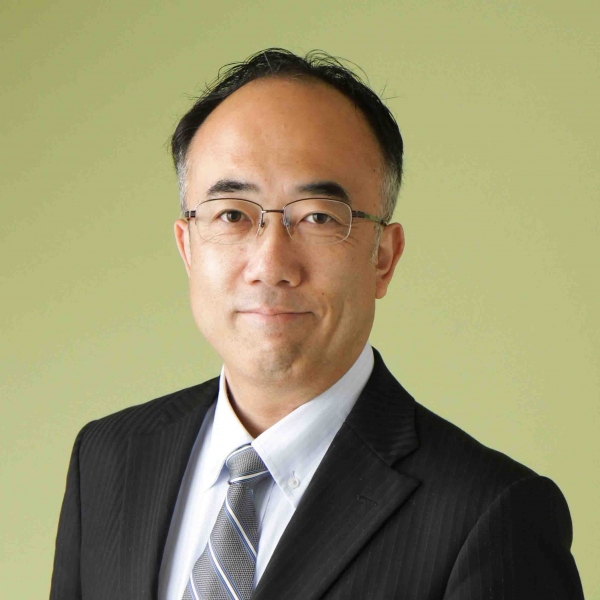 Prof. Jiro Kasahara Department of Aerospace Engineering, Nagoya University, Japan
Prof. Jiro Kasahara Department of Aerospace Engineering, Nagoya University, JapanTitle Detonation-engine-system space flight experiments and future roadmap
Detonation-engine-system space flight experiments and future roadmap
Prof. Jiro Kasahara
Department of Aerospace Engineering, Nagoya University, Japan
The detonation engine generates detonation and compression waves at extremely high frequencies (1–100 kHz) to drastically increase reaction speed, leading to radical reduction of rocket engine weights and high performance by easy generation of thrust. The research group has successfully demonstrated a detonation engine in space flight. The Detonation Engine System (DES) developed in this study was loaded onto the mission section of the sounding rocket S-520-31 and launched from the JAXA Uchinoura Space Center at 5:30 a.m. on July 27, 2021. After the separation of the first stage rocket, the rotating detonation engine and pulse detonation engine were successfully operated in space, and photo images, pressure, temperature, vibration, position, and attitude data were acquired by telemetry and RATS (Reentry and Recovery Module with Deployable Aeroshell Technology for Sounding Rocket Experiment). The fuel is methane and the oxidizer is oxygen. The success of this space flight demonstration will bring the detonation engine much closer to practical use as a kick motor for deep space exploration, and as a first and second stage engine for rockets. In this talk, we will show the detailed flight experiment and future roadmap of detonation engine development. -
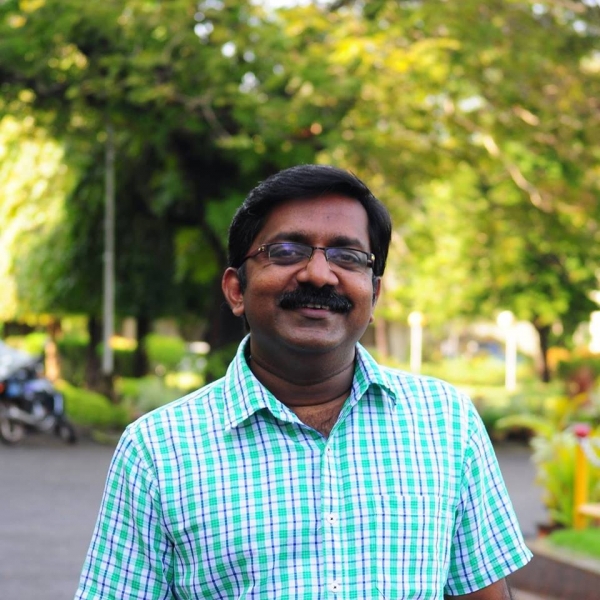 Prof. Rajesh Gopalapillai Department of Aerospace Engineering, IIT Madras, India
Prof. Rajesh Gopalapillai Department of Aerospace Engineering, IIT Madras, IndiaTitle A Review on the Predictions of Mach Reflection Configurations
A Review on the Predictions of Mach Reflection Configurations
Prof. Rajesh Gopalapillai
Department of Aerospace Engineering, IIT Madras, India
An Mach Reflection (MR) configuration is distinctive with the presence of many
discontinuities when compared to a Regular Reflection (RR). The triple point
where 4 discontinuities meet, the size and shape of the subsonic pocket after
the Mach stem, expansion shock interactions, the slip line and the height of the
Mach stem itself attribute to the profound changes in the flow field when the
shock reflection configuration changes from a RR to an MR. Of particular
interest, the Mach stem height forms a major length scale associated with the
MR configuration as it helps identifying the region of high temperature and
pressure forces in an MR. The analytical estimation of the Mach stem height and hence obtaining the MR ↔ RR transition criteria when the Mach stem shrinks to zero size has been an important area of research since many years. In this talk, I will give a detailed overview of the efforts towards quantifying the Mach reflection configurations which started with a simple analytical formulation by Azevedo (1989) for determining the Mach stem height in symmetric wedge flows which was subsequently modified by Li & Ben-Dor (1997), Mouton & Hornung (2008) in the same line of thoughts. Efforts towards refining the Mach stem heights based on the slipline curvature started with Tan, Ren & Wu (2006) and later elaborated by Gao & Wu (2010), Tao et al. (2017) and Bai & Wu (2017) for symmetric flows. This talk will cover the various efforts on the estimation of Mach reflection configurations in steady, symmetric, and asymmetric wedge flows, open jets, and the research gaps in this field.Dr. Rajesh Gopalapillai is working as a professor in the Dept. of Aerospace Engineering, Indian Institute of Technology, Madras. Before joining IIT Madras in 2013, He worked in various positions at Keimyung University, South Korea, Indian Institute of Space Science and Technology, Indian Space Research organization (ISRO) and Government Engineering Colleges in Kerala, India. He works in computational and experimental shock wave dynamics, interior, intermediate and exterior ballistics, blast attenuation, and bTBI. He has published more than eighty articles in reputed International Journals including Journal of Fluid Mechanics and Physics of Fluids and National and International Conference proceedings. He is a Life Member of International shockwave Institute, International Ballistic Society, and a Life Member and Governing Council member of the Society for Shockwave Research, India. -
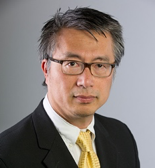 Dr. Ye Zhou Lawrence Livermore National Laboratory (LLNL), USA
Dr. Ye Zhou Lawrence Livermore National Laboratory (LLNL), USATitle Hydrodynamic instabilities and turbulence in traditional and high-energy density settings
Hydrodynamic instabilities and turbulence in traditional and high-energy density settings
Dr. Ye Zhou
Hydrodynamic instabilities and turbulence in traditional and high-energy density settings
Hydrodynamic instabilities such as Richtmyer–Meshkov (RM)1,2 and Rayleigh–Taylor (RT)3,4 instabilities usually appear in conjunction with the Kelvin–Helmholtz (KH)5,6 instability and are found in many natural phenomena and engineering applications.7,8,9 They frequently result in turbulent mixing, which has a major impact on the overall flow development and other effective material properties. This can either be a desired outcome, an unwelcome side effect, or just an unavoidable consequence, but must in all cases be characterized in any model. The challenges confronted by researchers are enormous. Essentially, a description of these flows must encompass both the temporal and spatial evolution of the flows from their inception. Hydrodynamic instability will usually start from potentially infinitesimal spatial perturbations, will eventually transition to a turbulent flow, and then will reach a final state of a true multiscale problem.10 Indeed, this change in the spatial scales can be vast, with hydrodynamic instability evolving from just a few microns to thousands of kilometers in geophysical or astrophysical problems.11 These instabilities will evolve through different stages before transitioning to turbulence, experiencing linear, weakly, and highly nonlinear states. In particular, the spatial and temporal criteria required for hydrodynamic instability driven flows to transition to turbulence have been established through theoretical analysis. In this keynote lecture, we provide an extensive survey of the applications and examples where such instabilities play a central role.
*This work was performed under the auspices of the U.S. Department of Energy by Lawrence Livermore National Laboratory under contract DE-AC52-07NA27344. Lawrence Livermore National Security, LLC.
1 Lord Rayleigh (John William Strutt), 1883. Investigation of the character of the equilibrium of an incompressible heavy fluid of variable density, Lord. Proc. London Math. Soc., 14, 170.
2 Taylor, G.I., 1950. The instability of liquid surfaces when accelerated in a direction perpendicular to their planes. I. Proceedings of the Royal Society of London. A. 201, 192.
3 Richtmyer, R.D., 1960. Taylor instability in shock acceleration of compressible fluids. Communications on pure and applied mathematics, 13, 297.
4 Meshkov, E.E., 1969. Instability of the interface of two gases accelerated by a shock wave. Fluid Dynamics, 4, 101.
5 Lord Kelvin (William Thomson), 1871. Hydrokinetic solutions and observations, {Philosophical Magazine}, {42}, 362.
6 von Helmholtz, H., 1868. On the discontinuous movements of fluids, {Monatsberichte der Königlichen Preussische Akademie der Wissenschaften zu Berlin}, {23}, 215.
7 Zhou, Y. Hydrodynamic Instabilities and Turbulence: Rayleigh-Taylor, Richtmyer-Meshkov, and Kelvin-Helmholtz Instabilities, Cambridge University Press (Spring 2023).
8 Zhou, Y., 2017a. Rayleigh–Taylor and Richtmyer–Meshkov instability induced flow, turbulence, and mixing. I. Phys. Rep. 720-722, 1.
9 Zhou, Y., 2017b.Rayleigh–Taylor and Richtmyer–Meshkov instability induced flow, turbulence, and mixing. II. Phys. Rep., 723-725, 1.
10 Zhou, Y., Clark, T.T., Clark, D.S., Glendinning, S.G., Skinner, M.A, Huntington, C.M., Hurricane, O.A., Dimits, A.M. and Remington, B.A., 2019. Turbulent mixing and transition criteria of flows induced by hydrodynamic instabilities. Physics of Plasmas, 26, 080901.
11 Zhou, Y., Williams, R.J., Ramaprabhu, P., Groom, M., Thornber, B., Hillier, A., Mostert, W., Rollin, B., Balachandar, S., Powell, P.D., Mahalov, A., Attal, N. 2021. Rayleigh–Taylor and Richtmyer–Meshkov instabilities: A journey through scales. Physica D: Nonlinear Phenomena, 423, p.132838.
Dr. Ye Zhou is a physicist at Lawrence Livermore National Laboratory (LLNL). Prior to joining LLNL, he was a senior staff scientist at the Institute for Computer Applications in Science and Engineering (ICASE), NASA Langley Research Center. He has published over 120 peer reviewed articles in such journals as Physics of Fluids, Physics of Plasmas, Journal of Fluid Mechanics, and Physical Review E (including eight major review articles in Reviews of Modern Physics, Physics Reports, Applied Mechanics Reviews, Physica D, and Physics of Plasmas), and has delivered keynote and tutorial lectures at several major international conferences, including Turbulence and Interactions and American Physical Society Division of Plasma Physics Annual Meetings. He was elected to be a fellow of the American Physical Society as well as the United Kingdom’s Institute of Physics and currently serves as an associate editor of Computers & Fluids. Previously, he was an associate editor of Journal of Turbulence, Journal of Scientific Computing, and Journal of Fluids Engineering, and a guest editor of Physica D (Nonlinear Phenomena) and Theoretical and Computational Fluid Dynamics. He is the author of the Cambridge University Press book “Hydrodynamic Instabilities and Turbulence: Rayleigh-Taylor, Richtmyer-Meshkov, and Kelvin-Helmholtz Instabilities,” published in Spring 2023. -
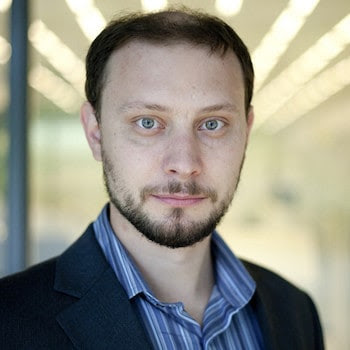 Prof. Mirko Gamba Aerospace Engineering at the University of Michigan, USA
Prof. Mirko Gamba Aerospace Engineering at the University of Michigan, USATitle On the existence and role of secondary effects impacting operation and performance of rotating detonation engines
On the existence and role of secondary effects impacting operation and performance of rotating detonation engines
Prof. Mirko Gamba
Aerospace Engineering at the University of Michigan, USA
Although the concept of using a rotating detonation wave in an enclosed (annular) chamber as a means of effective combustion dates back to the 1960’s, its use in rotating detonation engines (RDEs) has gained much attention only in recent years because of the thermodynamic benefits it offers for propulsion and power generation applications. The benefit offered by an RDE over conventional constant pressure combustion arises from the fact that, at least ideally, chemical energy release occurs at nearly constant volume across a detonation wave, rather than in a deflagrating region. The constant volume combustion provides an effective compression of the post-combustion gases over that provided by the compression stage. This additional compression results in what is referred to as pressure gain, which ultimately translates into increased amount of work extracted from the system, making an RDE a pressure gain combustion (PGC) device. Drawing from observations on multiple studies, we will first discuss the basic operation of an RDE and then focus on a series of phenomena, collectively defined as secondary effects, that are believed to limit the operation of the device, the dynamics of the detonation wave and possibly, its ability to generate pressure gain. Specifically, we will discuss the presence and impact of systems of secondary waves and secondary combustion fronts, which we term parasitic and commensal combustion regions. These two forms of secondary combustion have different impacts on detonation wave properties. In combination, they impact the stability and properties of the detonation wave, with consequences on achieving robust operation and gain in practical applications.Mirko Gamba is an Associate Professor in Aerospace Engineering at the University of Michigan, Ann Abor. His research focuses on fundamental research in a diverse range of advanced and sustainable application concepts for propulsion and energy conversion systems, using laser diagnostics techniques as tools to investigate fundamental phenomena that control operation of these systems. -
 Prof. Wolfgang Schaden Ludwig Boltzmann Institute for Traumatology, Austria
Prof. Wolfgang Schaden Ludwig Boltzmann Institute for Traumatology, AustriaTitle Mechanism of action of extracorporeal shockwaves in biological tissues
Mechanism of Action of Extracorporeal Shockwaves in Biological Tissues
Prof. Wolfgang Schaden, MD
Ludwig Boltzmann Institute for Traumatology, Vienna, Austria
Initially, a "mechanistic model" of the shockwave was assumed: According to this
theory, shockwaves, after penetrating the soft tissue mantle without causing
damage, produce microlesions in the target region and thus trigger the healing
stimulus. According to more recent findings in basic research, the assumption of a
mechanical effect proved to be incorrect.
From the mechanistic model to the body's own "bio-engineering"
Mechanotransduction
Through basic research by various research groups worldwide, it has been
demonstrated that shockwaves, without causing mechanical damage, trigger a
biological response in the treated tissue through their pressure, tensile and shear
forces. This process is called mechanotransduction. Under the influence of
shockwaves, the cell nucleus activates genes and groups of genes, which in turn
produce proteins (including growth factors) responsible for the healing process.
These cause increased ingrowth of newly formed blood vessels, which improves local
metabolism and initiates healing through the formation of new tissue.
Recent studies have demonstrated that the shockwaves in the cell nucleus also cause
the production of messenger substances that apparently mobilize the body's own
stem cells from the bone marrow, which then migrate to the treated tissue, settle
there and develop into the required cells (e.g. heart muscle cells). This makes it
possible to initiate the body's own regeneration without having to fear the possible
complications that can occur with stem cell transplants.
For medicine, this principle of action opens up completely new possibilities: Instead
of the costly and sometimes risky production of stem cell cultures and biologically
highly effective substances (growth factors) in laboratories, shockwaves can
stimulate the body's own system to produce such substances.
Since shockwaves can apparently induce a regenerative effect on all tissues, the
interest of scientists has focused particularly on the heart and nerve tissue, for which
conventional medicine has no causal therapy. After intensive basic research scientists
have succeeded in developing shockwave therapy to the point of clinical testing.Prof. Dr. Wolfgang Schaden is a specialist in trauma surgery and sports medicine. In addition to his clinical work at the Trauma Center Vienna, he began his scientific work in the early 2000s at the Ludwig Boltzmann Institute for Traumatology. Besides numerous clinical studies, the exploration of the mechanism of action of shockwaves in biological systems is the focus of his research. He has published more than 100 papers in peer reviewed journals
and has given numerous keynote lectures at international congresses and meetings. He is a founding member of the International Society for Medical Shockwave Treatment, of which he became president in 2019. He is currently a Primary Investigator on several clinical trials and a scientific advisor to the Austrian Workers' Compensation Board. He has been Vice President of the German Speaking International Society for Shockwave Treatment (DIGEST) since 2016 and he is an honorary member of several national and international scientific societies. -
 Dr. José Eid The General Secretary of International Society for Medical Shockwave Treatment, Brazil
Dr. José Eid The General Secretary of International Society for Medical Shockwave Treatment, BrazilTitle ShockWave treatment - Paradigm changes in the medical fields
ShockWave treatment - Paradigm changes in the medical fields
Dr. José Eid
The General Secretary of International Society for Medical Shockwave Treatment, Brazil
Shockwaves were originally introduced in medicine as Extracorporeal Shockwave
Lithotripsy (ESWL) in the early 1980’s for kidney stones treatment. Since then, this technology indeed has been increasingly applied also to a broad range of
musculoskeletal diseases.
Nowadays Extracorporeal Shockwave Treatment (ESWT) is currently applied to a wide range of pathologies of different origins and localization in different medical fields.
The medical literature, through the research and clinical studies, develop patterns, rules and models being a paradigm in the medical field, with the aim to create a set of elements, beliefs, techniques that are accepted, bringing models treatment for the several pathologies with Evidence Based in Medicine (EBM), offering us model solutions for the community involved in basic science and good clinical practice.
ESWT is a paradigm shift, changing the usual way of thinking, replacing by a new and different way with strong support of evidence based in medicine.
ESWT is a safe, noninvasive and efficacy method, representing a very useful and
interesting therapeutic tool in the field of regenerative medicine.• Since 2019 - Assistant of the Orthopedic/ Traumatology Department at the Hospital do Coração Hcor in São Paulo - Brazil
• 2015-2024 - General Secretary of International Society for Medical Shockwave Treatment (ISMST)
• 2017-2019 - Vice President Regional Brazil - IberoAmerican Federation of Societies and Associations of Shockwave Medicine and Tissue Engineering in Medicine (ONLAT)
• 2015-2017 - President of IberoAmerican Federation of Societies and Associations of Shockwave Medicine and Tissue Engineering in Medicine (ONLAT)
• 2009-2010 - President of Medical Brazilian Shockwave Society (SMBTOC)
• 2001-2003 - Founder and President of Medical Brazilian Shockwave Society (SMBTOC)
• 1990 - 1991 - Specialization in Knee Surgery
- Basel- Switzerland (Kantonspital- Bruderholz)
- Schwarzenbruck -Germany- Orthopadische Klinik (Krankenhaus Rummelsberg)
• 1989- 1990 Assistant Doctor in Knee Surgery - Orthopedic Department at Santa Casa de Sao Paulo - Brazil
• 1985-1988 - Specialization in Orthopedic and Traumatology Surgery at Santa Casa de São Paulo - Brazil -
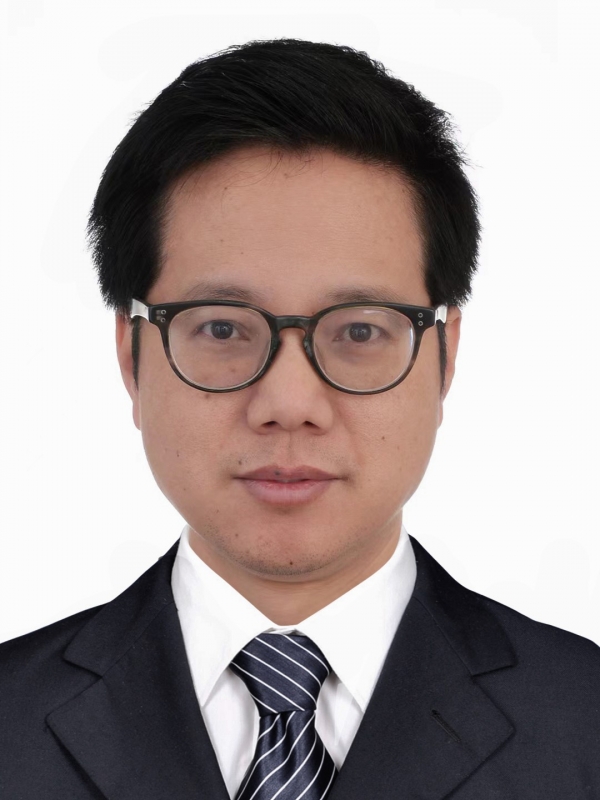 Prof. Kaiwen Xia School of Engineering and Technology, China University of Geosciences (Beijing), China
Prof. Kaiwen Xia School of Engineering and Technology, China University of Geosciences (Beijing), ChinaTitle Dynamic compressive response of porous rocks subjected to coupled
hydraulic-mechanical loadingDynamic compressive response of porous rocks subjected to coupled
hydraulic-mechanical loading
Prof. Kaiwen Xia
a. Institute of Geosafety, School of Engineering and Technology, China University of Geosciences (Beijing), Beijing, China
b. Department of Civil & Mineral Engineering, University of Toronto, Toronto, ON, Canada
Abstract
Deep rocks are in a natural environment featuring high in-situ stress and pore pressure, and their dynamic mechanical properties are of great significance to deep rock engineering problems. We developed an innovative split Hopkinson pressure bar (SHPB) system coupled with triaxial confinement and pore ressure. Using this system, we conducted a series dynamic compressive test of a green sandstone (GS). The experimental results indicate that the dynamic compressive strength of GS increases with the loading rate and the confining pressure, whereas decreases with the pore pressure.
Dynamic Coulomb strength criterion was first employed to describe the influence of the loading rate and the confining pressure on the strength parameters. The internal friction angle can be considered as a constant, whereas the cohesion is rate dependent but is independent of the pore pressure and the
confining pressure. Furthermore, the classical Ashby-Sammis micromechanical model was augmented by considering the dynamic loading and the pore water pressure, and then a dynamic constitutive model of deep rocks subjected to coupled hydraulic-mechanical loading was established and verified against the experimental results.Dr. Kaiwen Xia obtained his PhD degree from California Institute of Technology in 2005. After one year of postdoctoral research at Brown University, he joined University of Toronto in 2006 as an assistant professor in the Department of Civil and Mineral Engineering. He was granted the tenure in 2012 and then in 2023 he joined the School of Engineering and Technology, China University of Geosciences (Beijing). Dr. Xia’s research interest covers earthquake physics, rock dynamics, geological hazards, and geological storage of CO2. His academic contributions include the finding of supershear earthquake ruptures, development of spontaneous fracture tests, and development of innovative dynamic testing methods for rocks. So far, he has published 110 SCI journal articles. -
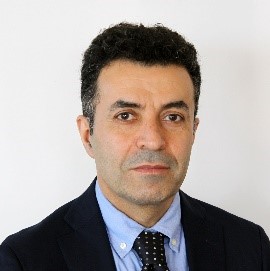 Prof. Hamid Hosano Biomaterials and Bioelectrics Department, Institute of Industrial Nanomaterials & Graduate School of Science and Technology, Kumamoto University, Japan
Prof. Hamid Hosano Biomaterials and Bioelectrics Department, Institute of Industrial Nanomaterials & Graduate School of Science and Technology, Kumamoto University, JapanTitle Shock waves in bioelectrics for medical therapy, green-energy/food extraction, and recycling
Shock waves in bioelectrics for medical therapy, green-energy/food extraction, and recycling
Prof. Hamid Hosano
Biomaterials and Bioelectrics Department, Institute of Industrial Nanomaterials & Graduate School of Science and Technology, Kumamoto University, Japan
The use of non-invasive or less-invasive medical procedures has numerous advantages, including cost, side effects, and post-procedure care, over conventional methods, particularly for the aging population. Recent advances in the control of electromagnetic and sonic waves propagation/interaction in deep tissue, have opened a new horizon for moving from non-invasive diagnosis to therapy, or even combining the two. Shock waves and electromagnetic waves offer their own advantages and limitations for therapeutic procedures. Meanwhile, they can be used for green biofuel extraction from microalgae and food processing with high efficiency. Another interesting application of pulsed power shock waves is for electronic-waste recycling to reduce environmental load. This talk summarizes our group's experiences with shock and electromagnetic waves induced by nanosecond pulsed electric fields for medical application, environmental protection, and electronic waste recycling. Current challenges and future opportunities in this regard will be discussed.
Keywords: Non-invasive therapy, Shock and electromagnetic waves, Energy and food extraction, RecyclingHamid Hosano received his Ph.D. degree in Aerospace Engineering from Tohoku University, Sendai, Japan, in 1999.
He was a Lecturer at Sharif University of Technology, from 1990 to 1996.
He served as Research Associate and Associate Professor at Tohoku University, from 1999 to 2006.
From 2006 to 2008, he was a Visiting Professor at the Department of Bioengineering, University of Washington, Seattle.
In 2008, he joined Kumamoto University as a Professor, where he is currently a faculty member of the Biomaterials and Bioelectrics Department, the Institute of Industrial Nanomaterials, and the Graduate School of Science and Technology.
His research interests are shock waves, pulsed power, and their biomedical application; bioelectrics; micro-fluidics; therapeutic ultrasound; and drug/nanoparticle delivery. Furthermore, he conducts studies on green energy, food preservation, waste recycling and environmental decontamination.
